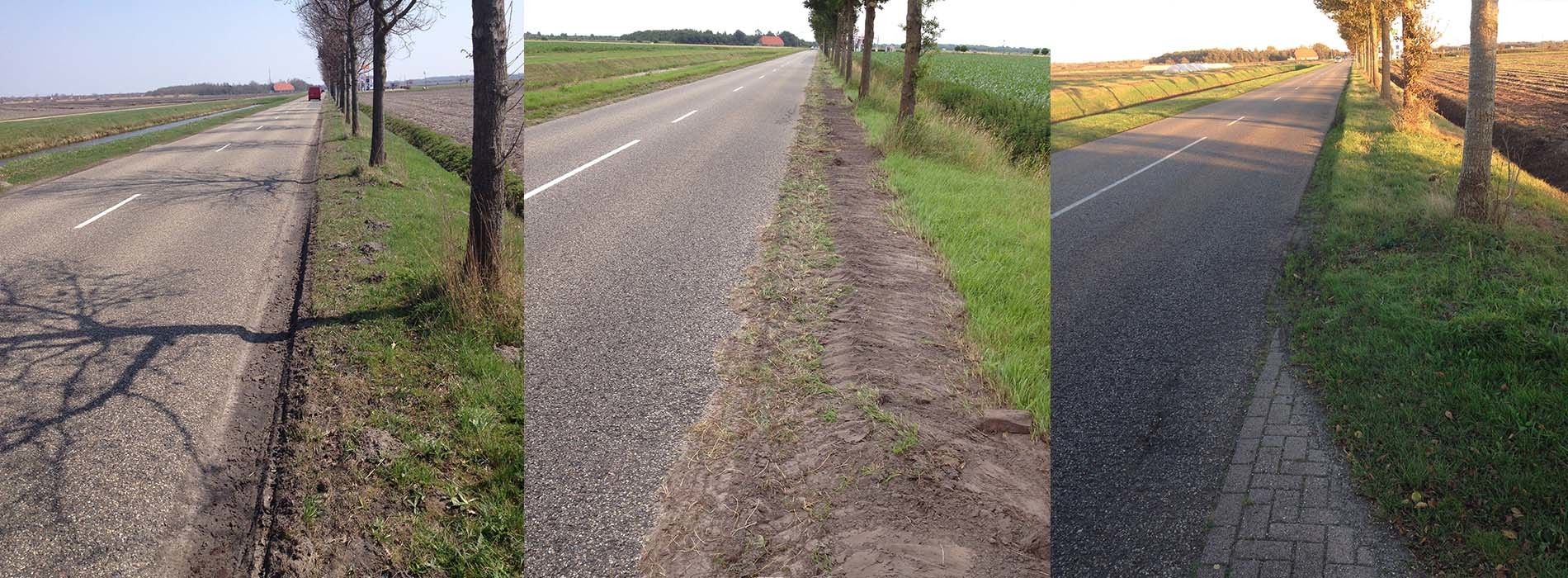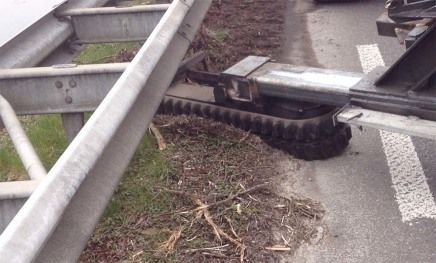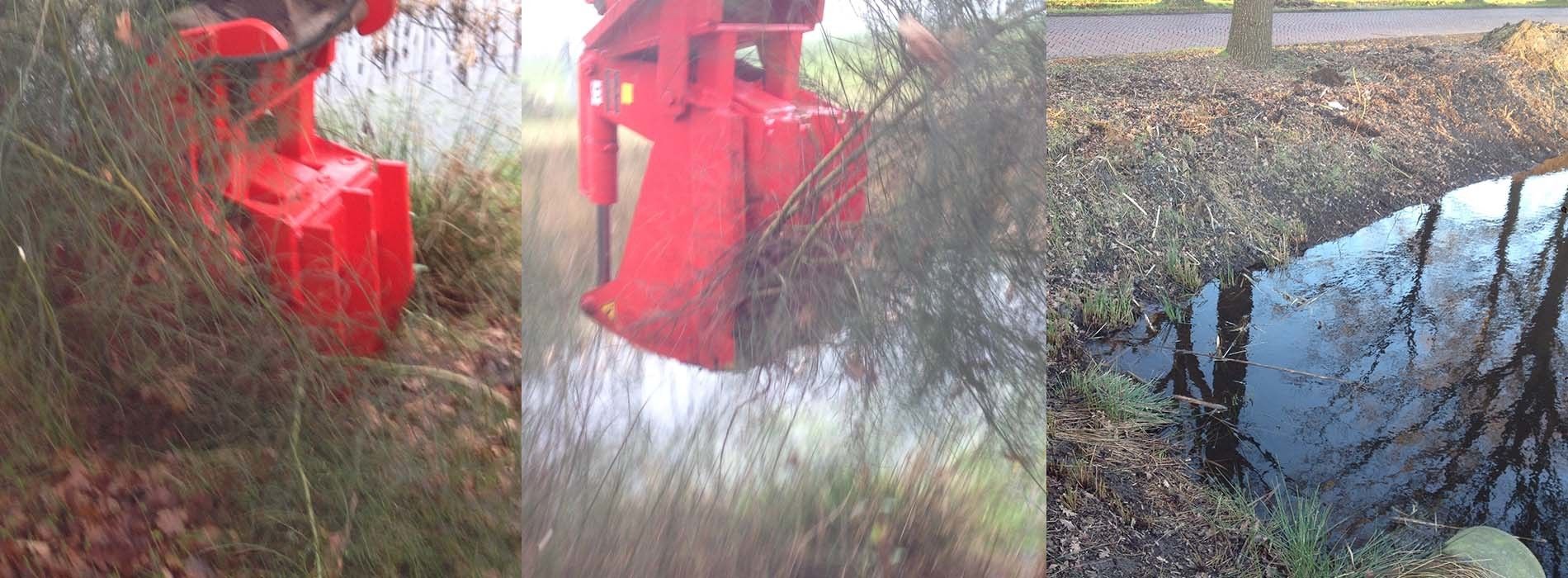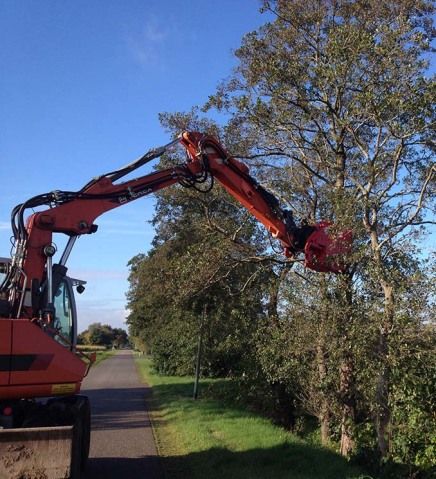ByTheWay…
Verge repair with the KLEISER®bh
Roads in rural areas are deliberately kept narrow, partly to keep costs down, and partly as a traffic calming measure. This makes it inevitable that the verges are used when large trucks or agricultural vehicles meet oncoming vehicles. Verges will, therefore, periodically suffer wear, which puts road safety at stake. Road managers have to repair the verges regularly to keep the road up to standard.
If verges are kept properly maintained, repair costs for damage to the road surface, such as subsidence and cracks in the asphalt, can be avoided.
KLEISER®bh
Sometimes, as in the municipality of De Wolden, all the verge maintenance that was previously carried out using a tilting bucket is now done using Kleisens. In other cases, the old methods have been partially replaced by Kleisens. Instead of refilling verges every year with a semi-hardening layer, verges are repaired with Kleisens until refilling with new material is inevitable. This method is used, for example, in Kampen and Zuidhorn.
In Ommen and Hardenberg, Kleisens are mainly used to supplement the augers used to maintain verges which are used by the local authorities. If limiting disruption to traffic is important, the Kleisen offers clear advantages over the alternatives. See the adjacent table for a comparison:
|
| Verge cutter | Auger | Asphalt cutter | Titlting bucket | KLEISER®bh | Refilling |
| Verge quality | + | + | +++ | + | +++ | + |
| Speed | +++ | + | ++ | - | ++ | + |
| Disruption to traffic | + | + | - | - | ++ | ++ |
| Damages | --- | -- | - | - | +++ | +++ |
| Safety | -- | - | + | ++ | +++ | ++ |
| Energy efficiency | + | + | - | -- | +++ | + |
| Eco-friendliness | 0 | ++ | + | ++ | ++ | --- |
| Costs of use | ++ | 0 | 0 | - | + | - |
| Additional costs | - | + | + | + | +++ | ---- |
| Sensitivity to weather | 0 | 0 | 0 | + | - | 0 |
| Total score | +1 | +4 | +5 | +1 | +21 | +3 |
The advantages of the KLEISER®bh
NB. The KLEISER®bh is not suitable for lowering verges which are structurally too high. In these circumstances, other equipment, such as a verge cutter, is more efficient. Filling holes in verges with material from elsewhere is ecologically undesirable, and becoming increasingly problematic. The surplus soil must be removed afterwards to allow water drainage. This is a costly process that will only become more expensive due to ever-stricter environmental regulations.
KLEISER®bh restores road safety. This is paramount. The above table already shows that the Kleisens are head and shoulders above the competition. We would like to highlight a few notable features:
- viable pieces of turf are brought to the edge of the road, so the turf revives relatively quickly
- verges become greener, which promotes the growth of the flowers so important to insects
- lower energy consumption (maximum power consumption is 4 kW)
- little disruption to passing traffic
- ideal for use on grass and soil around the edges of cycle paths, among other surfaces
How much verge do we repair per day?
The work rate currently averages between 2 and 6 km a day. The speed depends on the type of verge, objects such as trees on the verge, and traffic volumes.
Lowering of verges, even under guard rails - KLEISER®vr
Material always accumulates on verges. In farming areas dust from the air ends up on verges, lorries lose soil they are transporting, tyres and asphalt suffer wear: it all contributes to higher verges.
One of the most important functions of a verge is to drain water. If the verge is higher than the road surface, the very opposite happens: puddles remain on the road surface, constituting a threat to road safety. On country lanes and national roads in particular, the risk of aquaplaning and loss of control presented by this situation is considerable.
Lower verges with the KLEISER®vr
To lower verges, ByTheWay developed the KLEISER®vr. Like the KLEISER®bh, this machine cuts the verge material loose with rubber, meaning the risk of damage to road surfaces, guard rails and the machine itself is very low. What makes the KLEISER®vr so special? It is specifically designed to effectively and efficiently lower verges under the guard rail.
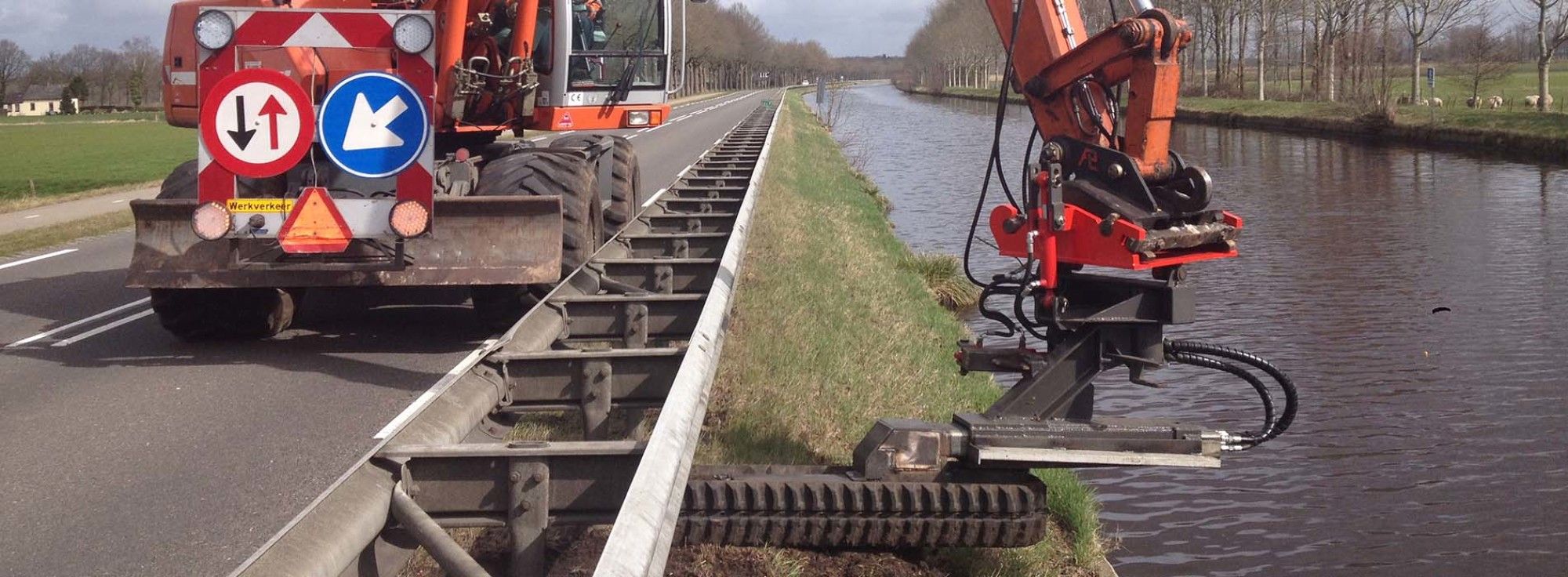
How much verge do we lower per day?
In two passes, without removal of the displaced verge material, the working speed of the KLEISER®vr averages just over 1 km per day.
ByTheWay, we are looking for...
In the Netherlands, we would like to get in touch with road managers or maintenance contractors who want to see how the KLEISER®vr could benefit their work.
In Europe, we are looking for partners who can see opportunities to market and exploit the KLEISER®vr in their country or region based on a license agreement. We can also supply KLEISER®vr machines. You, our partner, can independently set up a business model following our example in the Netherlands. Agreements where KLEISER®vr machines are rented or sold are also negotiable.
With an eye to expanding outside the Netherlands, we are also seeking collaboration with professional manufacturers and rental companies with a strong position in the market for our products, such as in equipment for hydraulic cranes.
For countries outside Europe, it is also possible that a partner could take over one or more patents for the country concerned.
KLEISER®sh: sustainable removal of woody vegetation
The KLEISER® sh removes unwanted vegetation, thereby protecting the turf.
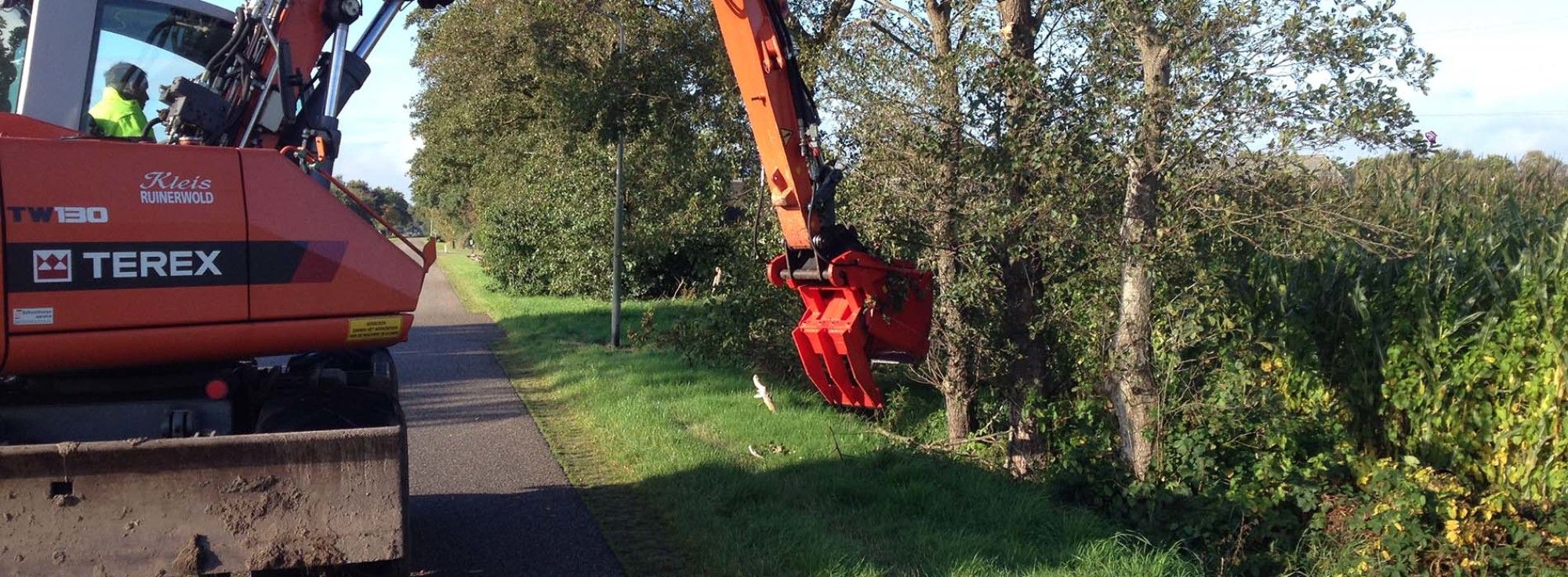
Protect turf, remove woody vegetation
In places along verges and ditches that are unsuitable for regular mowing, there is a good chance that trees and shrubs will start to grow. However, this overgrown woody vegetation can obstruct the view of road users. This vegetation used to be sprayed with weed killer, but this is no longer permitted.
The disadvantages of sawing
Woody vegetation is now often removed by sawing it or cutting it off above ground. The result? The plant starts growing from the stump left behind. In one growing season, the vegetation may reach a height of 3 metres; high enough to obstruct road users’ view again.
The stumps which remain are also very inconvenient for maintenance which uses a cutter basket or flail mower.
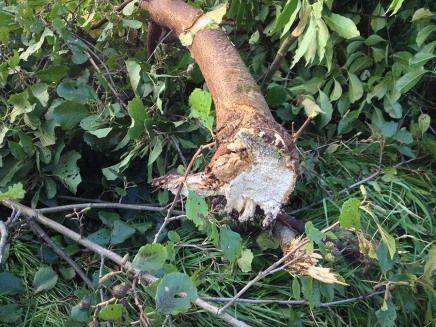
Pull it out of the ground, roots and all?
An alternative is to pull woody vegetation out of the ground, root and all. This is done with the bucket grab or sorting grab of the crane. The disadvantage of this method is that a lot of soil is also removed and the turf in ditch walls and verges is damaged.
The solution: KLEISER®sh
The KLEISER®sh keeps soil and sod in perfect condition, but permanently removes woody vegetation. How? The stump is cut off underground, while the stems of woody vegetation are simultaneously clamped. As a result, the removal process is highly-efficient. Put the KLEISER®sh into position, determine the cutting depth, close the mouth of the KLEISER®sh, move the crane arm to the unloading area, unload and put the KLEISER®sh into position again. The removed stump can no longer grow back, and the roots left in the ground die off.
In our own region, we actively carry out work using the KLEISER®sh. (This region includes: Drenthe, Overijssel North, South-East Friesland and the North-East Polder.)

